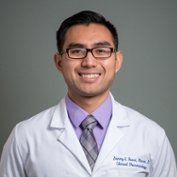Article
Q&A with a Pain Management and Palliative Care PGY-2 Pharmacy Resident
Author(s):
Have you ever considered pursuing a PGY-2 pharmacy residency in pain management and palliative care?

Danny S. Basri, PharmD, completed a PGY-2 Pain Management and Palliative Care Pharmacy Residency at West Palm Beach VA Medical Center. Dr. Basri completed his PGY-1 training at SUNY Upstate University Hospital in Syracuse, NY. His clinical interests include pain management and palliative care. After completion of his PGY-2 residency, he took on a position as a pain management clinical pharmacy specialist at WellStar Kennestone Hospital. In his free time, he enjoys spending quality time with family and friends, traveling, hiking, and trying out new restaurants.
Q: Why did you decide to pursue a PGY-1 and PGY-2 pharmacy residency?
A: During my APPE rotations I learned about the tremendous positive impact that clinical pharmacists can make in the lives of their patients. I decided to pursue a PGY-1 residency to refine my general clinical, research, and teaching skills. I ultimately pursued a PGY-2 residency in pain management and palliative care after I realized my passion for this specialty. It allowed me to focus on alleviating patients’ suffering, which was the primary reason I went into pharmacy.
Q: What is the structure of your residency program?
A: The structure of my residency program is based on the core, elective, and longitudinal learning experiences. The core rotations included 8 weeks of chronic pain management, 8 weeks of hospice/palliative care, 4 weeks of pharmacist run pain e-Consult service and exposure to the Physical Medicine and Rehabilitation department, 4 weeks of acute pain management, and 4 weeks of substance abuse/psychiatry.
The elective experiences I selected included 4 weeks of academia, 4 weeks of heart failure transitions of care, 4 weeks of hospice and palliative care level 3, 2 weeks of acute pain management level 2, and 2 weeks of hospice with Trustbridge Health. The longitudinal learning experiences included 6 months of hospice/palliative care, 6 months of chronic pain management, and a year-long program administration, drug information, residency project management responsibility.
Other requirements of the residency included completion of a medication use evaluation, development of an institutional policy/protocol, completion of at least 2 ACPE-accredited CE presentations, providing peer-review for manuscripts in progress, completion of topic discussions and journal clubs, co-precepting of pharmacy students and PGY-1 residents, and completion of a manuscript worthy of submission to a peer-reviewed journal.
Q: What are your day-to-day tasks?
A: My day-to-day tasks varied depending on rotation. The direct patient care clinical activities I provided included evaluating patients in the chronic pain and palliative care outpatient clinics, following patients in the inpatient hospice unit, responding to inpatient pain consults, and providing pharmacotherapy services in the substance abuse outpatient clinic.
The consultative services provided by chart review included providing recommendations regarding therapeutic and pharmacokinetic drug monitoring (e.g. urine and serum toxicology analysis), opioid tapers, non-opioid pain management therapies, and opioid pharmacotherapy. I provided education to professional staff in-person and via teleconference/webinars and developed institutional policies alongside direct patient care responsibilities.
Q: What are the benefits of completing a PGY-2 residency? What about the disadvantages?
A: The benefit is the opportunity to further develop the clinical pharmacy skills in your specialty area and lay the foundation for a career within your desired specialty. The disadvantage is that you have to make some financial and time-related sacrifices during the second residency year.
Q: How did you decide your PGY-2 residency program was the right fit for you?
A: My interview with the residency committee and PGY-2 resident at the time confirmed my interest in pursuing this position. I was highly impressed by the dedication and expertise of the residency director and associate directors. As the first PGY-2 Pain Management and Palliative Care residency within the VA system, the West Palm Beach VAMC has a long history of producing pharmacy practice leaders in pain management and palliative care.
Q: What opportunities does a PGY-2 pain management and palliative care resident have after completion of the residency?
A: The PGY-2 pain management and palliative care resident would be eligible for clinical pharmacy specialist positions in chronic pain, acute pain, palliative care, or hospice settings. Furthermore, the resident would also be competitive for positions in academia and public health in the field of pain and palliative care.
Q: What advice do you have for students looking to pursue a residency focused in pain management?
A: Use your time wisely and maintain a healthy work-life balance. Remember that a residency year is considered the equivalent of several years of clinical experience. Residency training is a concentrated experience that is well rewarded by immersing the resident in the field of pain and palliative care and prepares the resident to step out, grow in the field, and develop clinical practice sites on their own. Based on the growing need for pain management and palliative care specialists, there is job security for the future.

Measles Cases Climb to 800 in United States as Outbreak Spreads Across Borders




